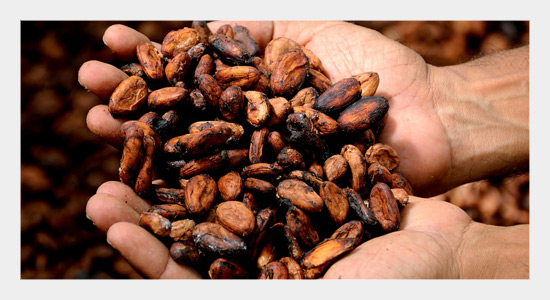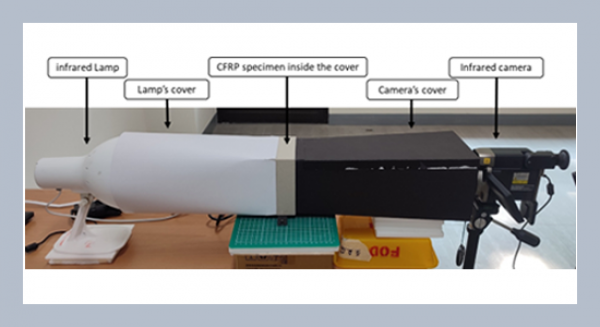Joseph Onaolapo Akinneye and Olaniyi Charles Ogungbite* Department of Biology, Federal University of Technology, Akure, Ondo State, Nigeria
Download Citation:
|
Download PDF
The entomotoxicant action of five different medicinal plant oils extracted with different solvents tested against Ephestia cautella infestation was conducted under laboratory condition. The ethanolic and petroleum ether extract of the botanicals were made using soxhlet apparatus. The oils were tested against the insect at 0.5 and 1.0ml dosages and each treatments were replicated three times. The ethanolic oil extract of M. tennuifolia was only the extract that acheived 100% moth mortality and its effect was significantly (p<0.05) different from all other extracts. However, petroleum ether increased the effect of the other extracts on the survival of the moth as reflected by their LD50. Regardless of the solvent used, all the oils reduced the hatchability of the egg of the insect while adult emergence of the insect was prevented by all the oil extracts except 0.5ml dosage of C. frutescens and A. occidentale. Since ethanolic extract of M. tennuifolia appeared most effective against the adult moth, it could be recommended for immediate control of E. cautella infestation while other extracts could be used as protectant.ABSTRACT
Keywords:
Ephestia cautella; cocoa; medicinal plants.
Share this article with your colleagues
[1] Ashamo, M. O. and Ogungbite, O. C. 2014. Extracts of medicinal plants as entomocide against Sitotroga cerealella (Olivier) infestation on paddy rice. Medicinal Plant Research, 4, 9: 1-7.REFERENCES
[2] Oni, M. O. 2014. Cayenne pepper, sweet pepper and long-cayenne pepper oil extracted with different solvents as fumigant entomocide against Sitophilus zeamais Infestation. International Journal of Horticulture, 4, 9: 44-49.
[3] Central Bank of Nigeria. 1998. “Annual Report and Statement of Accounts for the Year 1998”, pp. 7-9. Abjua, Nigeria. Central Bank of Nigeria.
[4] Olujide, M. G. and Adeogun, S. O. 2006. Assessment of cocoa growers’ farm management practices in Ondo State, Nigeria. Spanish Journal of Agricultural Research, 4, 2: 173-179.
[5] Akinnagbe, O. M. and Ajayi, A. R. 2010. Assessent of farmers’ benefits derived from Olam Organisation’s Sustanable cocoa production extension activites in Ondo State, Nigeria. Journal of Agricultural Extension, 14, 1:11-21.
[6] Akinneye, J. O. and Ogungbite, O. C. 2013. Effect of seed extracts of five indigenous plants against the stored product Moth, Ephestia cautella (Walker) (Lepidoptera: Pyralidae). Archives of Phytopathology and Plant Protection, 46, 12: 1488-1496.
[7] Forim, M. R., Da-silva, M. F. G. F., and Fernandes, J. B. 2012. Secondary metabolism as a measurement of efficacy of botanical extracts: The use of Azadirachta indica (Neem) as a model. In: Perveen, F. (Ed.). Insecticides-Advances in Integrated Pest Management, pp. 367-390. INTECH Open Access Publisher.
[8] Ogungbite, O. C. and Oyeniyi, E. A. 2014. Newbouldia laevis (Seem) as an entomocide against Sitophilus oryzae and Sitophilus zeamais infesting maize grain. Jordan Journal of Biological Sciences, 7, 1: 49-55.
[9] Ogungbite, O. C., Ileke, K. D. and Akinneye, J. O. 2014. Bio-pesticide Treated Jute Bags: Potential Alternative Method of Application of Botanical Insecticides against Rhyzopertha dominica(Fabricius) Infesting Stored Wheat. Molecular Entomology 5, 4: 30-36.
[10] Akinkurolere, R. O., Adedire, C. O., and Odeyemi, O. O. 2006. Laboratory evaluation of the toxic properties of forest anchomanes, Anhomanes difformis, against pulse beetle, Callosobruchus maculatus (Coleoptera: Bruchidae). Insect Science, 13, 1: 25-29.
[11] Okosun, O. O. and Adedire, C. O. 2010. Potency of cowpea seed bruchid, Callosobruchus maculatus (Fabricius) (Coleoptera: Bruchidae) of Africa nutmeg seed [Monodora myristica (Gaertn) Dunal] extracted with different solvents. Nigeria Journal of Entomology 27: 89-95.
[12] Zeeshan, M., Rizvi, S. M. D., Khan, M. S. and Kumar, A. 2012. Isolation, partial purification and evaluation of bioactive compounds from leaves of Ageratum houstonianum. Excli Journal, 11: 78-88.
[13] Oigiangbe, O. N., Igbinosa, I. B. and Tamo, M. 2010. Insecticidal properties of an alkaloid from Alstonia boonei De Wild. Journal of Biopesticide, 3, 1: 265–270.
[14] Akinneye, J. O., Adedire, C. O. and Arannilewa, S. T. 2006. Potential of Cleisthopholis patens Elliot as maize protectant against stored product moth, Plodia interpunctella (Hübner) (Lepidoptera; Pyralidae). African Journal of Biotechnology, 5, 25: 1015–1025.
[15] Yang, Z., Zhao, B., Zhu, L., Fang, J., and Xia, L. 2006. Inhibitory effects of alkaloids from Sophora alopecuroids on feeding, development and reproduction of Clostera anastomosis. Front for China, 1, 2: 190 – 195.
[16] Ileke, K. D. and Ogungbite, O. C. 2014. Entomocidal activity of powders and extracts of four medicinal plants against Sitophilus oryzae (L), Oryzaephilus mercator (Faur) and Ryzopertha dominica (Fabr.). Jordan Journal of Biological Sciences, 7, 1: 57-62.
[17] Bhaduri, N., Gupta D. P., and Ram, S. 1990. Effect of vegetable oils on the ovipositional behavior of Callosobruchus maculatus (Fabricius) In: Fuji, K., Gatehouse, A. M. R., Johnson, C. D., Mitchel, R., and Yoshida, R. (Eds.). Bruchids and Legumes: Economics, Ecology and Coevolution, pp. 81-84. Dordrecht. Springer Netherland. Netherland.
[18] Ashamo M. O, Akinneye J. O. 2004. Toxicity of powders of some tropical plants against the yam moth, Euzopherodes vapidella Mann (Lepidoptera:Pyralidae). Nigerian Journal Experimental and Applied Biology, 5: 63–68.
ARTICLE INFORMATION
Received:
2015-03-18
Revised:
2016-03-19
Accepted:
2016-03-21
Available Online:
2016-03-01
Akinneye, J.O., Ogungbite, O.C. 2016. Entomotoxicant potential of some medicinal plant against ephestia cautella infesting cocoa bean in storage. International Journal of Applied Science and Engineering, 14, 59–68. https://doi.org/10.6703/IJASE.2016.14(1).59
Cite this article:















